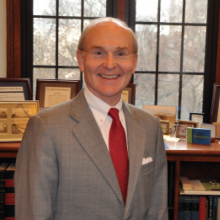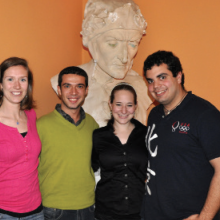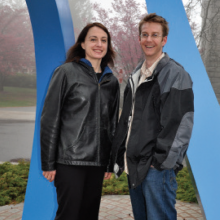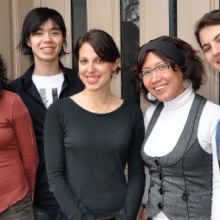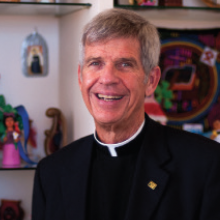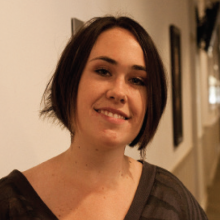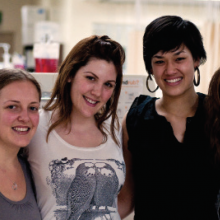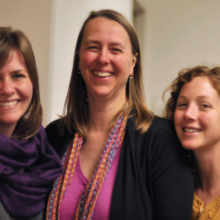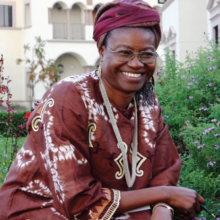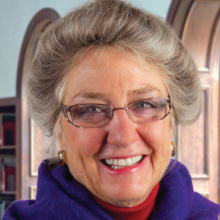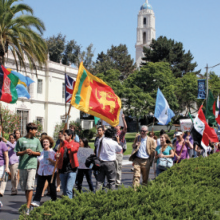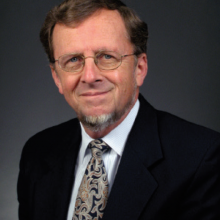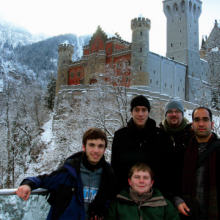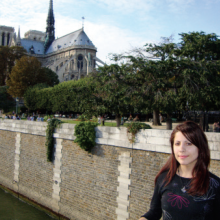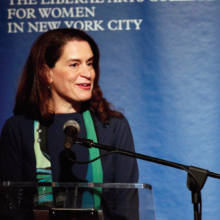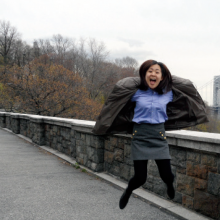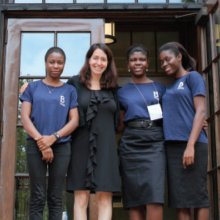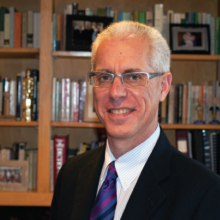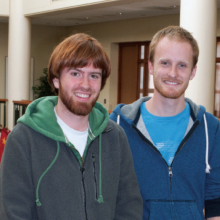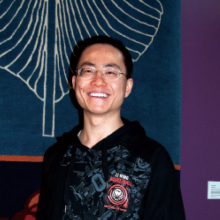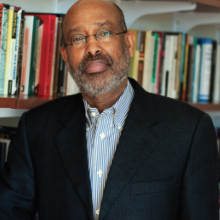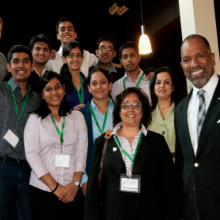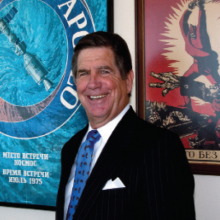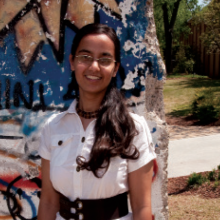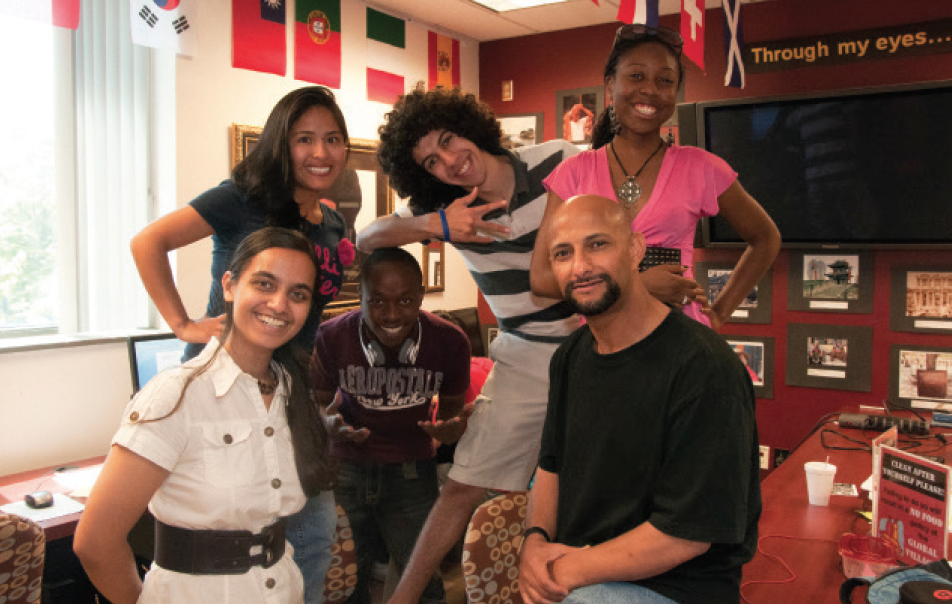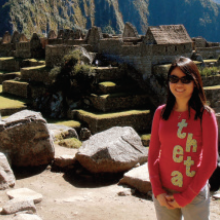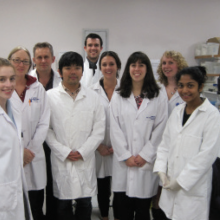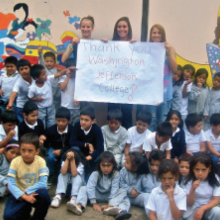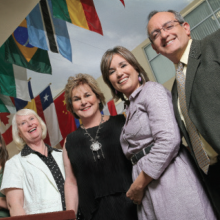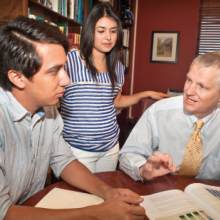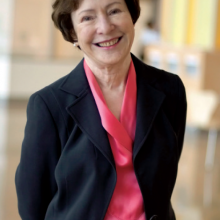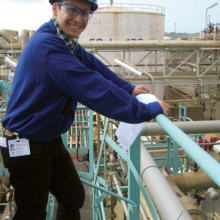2009 Comprehensive Connecticut College
From its classic, New England campus with the postcard view of New London’s steeples and Long Island Sound, Connecticut College has taken an interdisciplinary approach to ensuring that its 1,900 students learn to become “international citizens,” as President Leo I. Higdon Jr. puts it.
Some of the most worldly and widely traveled are the 30 admitted as sophomores each year into the Center for International Studies and the Liberal Arts (CISLA), a certificate program with its own $7 million endowment that provides airfare and a $3,000 stipend for CISLA’s Global Scholars to do internships anywhere in the world. They must complete a research project as seniors upon their return./p>
David Urbaneja-Furelos, an international relations and East Asian Studies major from Burgos, Spain, interned for the United Nations Industrial and Development Organization in Beijing and Taiyuan, China. “I’ve always wanted to work for the United Nations, but the UN only offers unpaid internships that usually are reserved for master’s students. CISLA helped me to afford something that otherwise would never have happened.” Chinese language major George Fernandez interned for NBC during the Olympics and for a developer in Beijing.
Gili Ben-Yosef, a sociology major, interned in Argentina for a Jewish relief agency and wrote her senior paper on what it means to be Jewish in twenty-first century Buenos Aires. Nonprofits needn’t worry about whether they can afford an intern. “We basically have the whole world open to us and can choose the ideal internship,” she said. “It empowers us to go international after graduation.”
Experiencing a New Culture Alone
Jessamyn Cox found it lonely at times being on her own in Reutlingen, Germany, while interning at an art museum. “You’re outside your comfort zone and don’t have the support system of family and friends,” she said. But experiences like hers make the CISLA internships all the more formative. Mary Devins, associate director of CISLA, said, “This living by yourself without a friend down the hall is an enormous learning experience.” Added Robert Gay, CISLA director, “We push them.” Gay, a British-born ethnographer who studies crime and poverty in the favelas of Rio de Janeiro, Brazil, said the CISLA certification on a diploma means “that you went abroad and worked in a professional situation where you may be the only English speaker in an office. It’s a tremendous asset for your resume.” Robert Proctor, professor of Italian and a founder of the program, said, “Whatever we do here in the classroom, it’s nothing compared with the growth we see in these kids upon their return.”
The popularity of CISLA spawned three other interdisciplinary centers that offer certificates in conservation biology and environmental studies, arts and technology, community action and public policy. One in six undergraduates now works to the higher standards demanded by these centers.
Pipeline to Vietnam
CISLA was created two decades ago under former President Claire Gaudiani, who also had a hand in designing the college’s Study Away/Teach Away (SATA) program, in which one or two faculty and 10 to 20 students spend a semester in another land. Originally, said government Professor Alex Roberto Hybel, the intention was to study only in developing countries. But some of those destinations were a difficult fit for faculty whose research interests lay elsewhere, and eventually professors began leading students on SATAs to Rome and Prague as well as to China, India, Vietnam, and Peru. “Initially there was some reluctance, but as faculty members realized how much they could benefit,” more stepped up to lead SATAs, said the Argentine-born Hybel, who doubled as dean of international programs in the mid-1990s.
In 2008 there were SATAs to Mysore, India, to Hanoi, Vietnam, and to Rome, Italy. That was the eighth time for the program in Hanoi, where the Connecticut College contingent lives in a residence for international students and takes courses taught by their own professors and the faculty of Vietnam National University (VNU). To date 150 students and 14 faculty have gone to Hanoi, and 19 VNU faculty have paid reciprocal visits to New London. William Frasure, a professor of government instrumental in arranging these exchanges, in 2008 became the second American ever awarded an honorary doctorate by the Vietnamese university.
“Several new courses that directly draw upon our Vietnam experience have been introduced into the college’s curriculum, and numerous existing courses have been enriched by it.”
Frasure said, “Several new courses that directly draw upon our Vietnam experience have been introduced into the college’s curriculum, and numerous existing courses have been enriched by it.” In addition to expanding students’ academic horizons, “the Vietnam project has really meant a whole new career direction” for some faculty, he added.
Spring Break in St. Petersburg, Russia
Connecticut College, a women’s college until 1969, also sends students abroad for shorter stretches on its Traveling Research and Immersion Program (TRIP). TRIPs take place between semesters, over spring break, and at the end of the academic year. Andrea Lanoux, chair of Slavic studies, took her beginning Russian students to Russia over spring break in 2008 and 2009. “I had 17 people last year sign up for Russian. I went from 6 to 17 overnight,” said Lanoux. Each student also received a loaner iPod filled with Russian pop music, folk songs, poetry, videos, cartoons, talk shows, nursery rhymes, and language exercises. A foundation grant paid for the iPods.
“When you hand these out in class and students who don’t know Russian turn them on and it’s all in Cyrillic, their eyes just light up. It’s a wonderful thing. I would never teach a class again without iPods. It’s the perfect tool for language learning,” said Lanoux. “Japanese and German [programs] are also doing it.”
In 1991, Judaic studies scholar Roger Brooks, now dean of the faculty, was one of the first professors to lead a TRIP. Showing students a slide of Robinson’s Arch, the remains of a once grand archway to the ancient Jewish Temple in Jerusalem, he instructed students to look for these remains “if you ever go to Jerusalem.” One student raised her hand and said, ‘Spring break is coming up. Why don’t we all go and you can show it to us.’ Four and a-half-weeks later, all 23 students were with me in Jerusalem,” he recalled.
Preparing Students for Global Lives
Connecticut College’s revised mission statement wastes no time in emphasizing the international. The first sentence reads, “Connecticut College educates students to put the liberal arts into action as citizens in a global society.” The college emphasized a need to further internationalize when it launched a $200 million fund-raising drive in 2008: “We must ensure that all our students are prepared to thrive in this global society. We will bring international content to every course of study, and we will expand foreign language proficiency. We will create new ways for students to study abroad and new international experiences on campus.”
Students must take one semester of an intermediate language course or one year of a new language. Frances L. Hoffmann, a professor of sociology and women’s studies, said the college has tried “to shift the nature of foreign language instruction to encourage students to become verbally excellent as well as able to read.” For example, Paola Sica, associate professor of Italian, said, “Many students are interested in art history. We try to find the link between our upper level Italian courses and the courses they’re offering in the art history department. We’re trying to find new directions not enclosed in a little box.”
The college started offering Arabic in 2007, and an interdisciplinary program in Islamic World Civilizations is on the drawing boards. “We need more languages. We need more people. We need to broaden the scope of what we do. But it’s all just a matter of money we don’t have,” said Edward Brodkin, an Asian history specialist.
“Connecticut College educates students to put the liberal arts into action as citizens in a global society.”
Hoffmann, former dean of the faculty, led a drive to expand Knowlton, the international residence hall, to accommodate an “International Cultural Commons” that would be filled with satellite televisions’ broadcasting international news, sports, and cultural events. “I had this notion that when the World Cup was on, we’d show the games, have a dinner and music, and you’d have to speak the language of the teams that were playing, trying to marry the cocurricular life and academic life.” But the grand plans—which would have cost at least $11 million—ran into structural and financial roadblocks.
“We came together and made an adjustment around the balance between physical facilities and programs,” said President Higdon. “What we want to try to do is support curricular and faculty development around our international global immersion and objectives.” An anonymous $1 million gift is helping with what is now called the International Commons initiative.
Mixing Food and Languages
Last fall the college appointed its first Foreign Language Fellows, student peer counselors who are paid $1,200 a year to mount social and cultural events promoting nine languages. “It’s a challenge to actually make (other) students participate,” said Cinthia Isla Marin, a sophomore from Iquitos, Peru, who is the Spanish Foreign Language Fellow. “The United States is full of Spanish speakers. The students are like, ‘What’s the point of going to an activity? I can turn around and see a Spanish speaker if I want.’ For them, the activities have to be much sexier.” One of her hits was a Spanish karaoke night. She also found pen pals for her classmates among her former United World Colleges classmates. United World Colleges (UWC), a global educational NGO, selects students from across the globe regardless of their ability to pay for higher education opportunities. UWC has 13 colleges across five continents that aim to foster international understanding and peace.
Katherine Shabb, born in Texas but raised in Lebanon, was the Arabic Fellow. With the help of kitchen workers of Lebanese descent, the freshman redecorated the Knowlton dining room with Lebanese flags, served Middle Eastern food, and brought in a Middle Eastern singer for entertainment. “It was a much smoother transition for me coming from Lebanon, finding that there’s such a strong international commitment in the school,” said Shabb.
Faculty Engagement in International Programs
Chemistry Professor Marc Zimmer three times has taken students to his native South Africa. He was named Connecticut’s Professor of the Year in 2007, in part for his success in mentoring minority students. His research on green fluorescent protein (which can tag cancer cells) is funded by both the National Institutes of Health and the National Science Foundation. He came to Connecticut College in 1990 from a postdoctoral fellowship at Yale University and “one reason I stayed was because I wanted to do more SATAs. It’s a great opportunity for me and my family.”
Brodkin, a historian of Asia, has led a half dozen semester programs in India. Brodkin, retiring at the end of 2009 after four decades on the faculty, remembers a time when half the required courses for history majors dealt with European history and a quarter were about the United States. “The implication was that Europe was twice as important as America and the rest of the world didn’t really matter at all,” he said. “That changed very quickly when we got people from the rest of the world. We now have an Africa historian and a Latin America historian.”
Resources the Only Impediment
Armando Ignacio Bengochea, dean of the College Community, said, “The only thing that
stops Connecticut College from realizing any of its largest ambitions is simply resources. We have incredible ambitions and they’re only held in check by resources. We would certainly have many more international students if we could afford them.” Budget pressures led the college to cut back slightly on admission offers this year to international students who needed significant aid, and Martha Merrill, dean of admission and financial aid, is hoping to find more international students who can pay all or much of the comprehensive fee. “Those are the challenges for us as a small college without the name recognition (of) some other institutions,” she said.
Almost five percent of Connecticut College’s 1,900 students are international. Roughly the same percentage hold dual citizenship, and several dozen more are permanent residents or U.S. citizens who grew up overseas.
Finding the resources to meet Connecticut College’s ambitions rests principally on the shoulders of Higdon, who became president in 2006 after leading the College of Charleston and Babson College and serving as dean of the Darden School of Business at the University of Virginia. Higdon, a former Peace Corps volunteer in Malawi, spent two decades as an investment banker on Wall Street before switching to academe.
“Our overarching vision is to be one of the very best liberal arts colleges in the land. We think we’re moving toward that goal” by emphasizing globalization and cross-cultural fluency for students and faculty, said Higdon. However the economic winds blow, Connecticut College is holding steady on that course.


